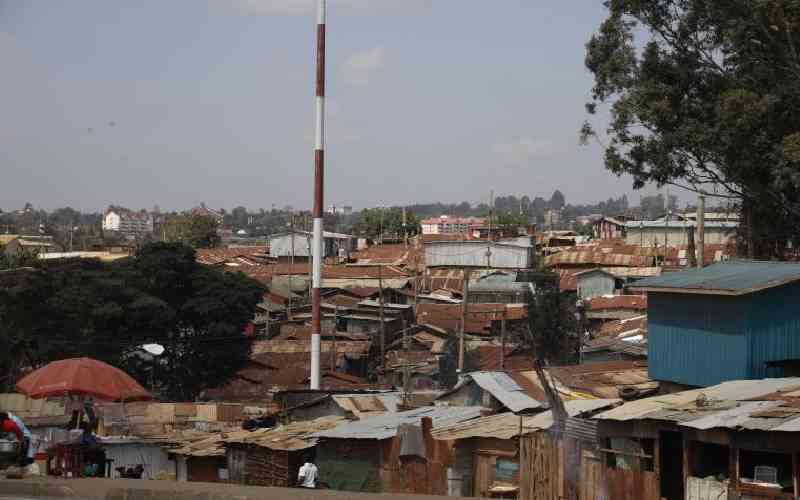The Kenya National Bureau of Statistics (KNBS) reported late last month that our GDP grew at a rate of 6.3 per cent in the second quarter of this year.
This was way above 4.7 per cent reported in the same period last year.
GDP is the value of all products and services produced in a country. The good news was never in the headlines.
There were competing headlines from court trials to inaugural direct flight to the US, 109 years since the first Kenyan Ole Sempele landed in America.
Compared with China which has been growing quite fast and recorded 6.9 per cent growth last year, we are not that badly off.
The star sectors were agriculture, electricity and water supply buoyed by good rains. Accommodation, food service, and Information and communication did the best.
The laggards were mining, quarrying, and construction.
Election jitters
The growth could also be attributed to the handshake and its attenuation of post-election jitters.
Few can believe the economy is doing so well when auctioneers are so busy going by adverts in the newspapers.
Take heart, the victims of auctioneers are paying the price of the 2016 and 2017 electioneering when the economy took a nosedive.
The effects of policies or other big events that rattle the economy such as elections are not felt immediately but with a lag, months or sometimes years after the decisions are made.
A good example is the vibrant state of the US economy.
While President Trump will take political credit, some of the decisions leading to the growth of the American economy were made during Obama’s era.
Stay informed. Subscribe to our newsletter
Some of the seeds of economic growth in Kenya were planted during Kibaki era like improvement in infrastructure.
Other policy decisions like education reforms can take a generation.
The graduates of the new 2.6.6.3 education system will not join the job market until around 2030 AD, only then can we conclude if the reforms were successful.
The recovery of the Kenyan economy may not be felt immediately by those at the bottom of the pyramid because the trickledown effect also takes time.
Once you decide to put up a housing project or a dam, it takes time to get approvals and gather a project team before you start hiring workers whose wages will create more demand and jobs throughout the economy.
The recovery also takes longer to be felt if the country has a high level of inequality; Kenya is in that class. Money is often “reluctant” to cross socio-economic classes.
An inefficiency economy, where information is not easily available also reduces the speed of recovery.
Despite the internet, there is no guarantee that important information is quickly shared.
How many read the budget? How many even read the KNBS report we are referring to?
I might be wrong but the impression that we can get any information from Google has made us lazy and I could add, ignorance.
Incidentally, to give credit where its due, it is not just the GDP that has grown, other macroeconomic fundamentals are good from exchange rate to interest rates and inflation.
The NSE index was also stable in the quarter too.
Why didn’t we celebrate?
We are not used to celebrating good news in Kenya.
Yet the “feel good effect “from such good news could raise our GDP growth. More Kenyans would focus on the economic activities with the belief that the future is bright.
Those who have been postponing decisions on consumption or investment could finally make decisions.
In developed countries, such good news would be trumpeted by politicians and policy makers. We may not be celebrating because of exhaustion, we produced the goods and services that make up GDP.
Growth is driven by you and me, working hard as individuals.
Did you play your role in growing the GDP? Did you work extra hours or you skived work to work “smart”?
Disaggregate data
One missing link in KNBS data is County Domestic Product (CDP) growth.
Can we desegregate data by county so that in every quarter we can tell which county is growing fastest?
If we can get data on the most corrupt counties, why not on their economic performance? Such data would be great for investors.
The GDP growth is also driven by outsiders who buy our goods and services. That is why quality products and services are so important to the importers.
If we each played his or her role with the right incentives beyond salary or wages, there is no reason this country’s GDP growth can’t reach the 10 per cent envisaged in Vision 2030.
What is the expected growth in the third and fourth quarters of 2018? My guess is 6.5 and 6.8 per cent.
A seven per cent growth rate next year should be in order.
After all, what is wrong with being an optimist in a sea of pessimism.
-The writer teaches at the University of Nairobi
 The Standard Group Plc is a
multi-media organization with investments in media platforms spanning newspaper
print operations, television, radio broadcasting, digital and online services. The
Standard Group is recognized as a leading multi-media house in Kenya with a key
influence in matters of national and international interest.
The Standard Group Plc is a
multi-media organization with investments in media platforms spanning newspaper
print operations, television, radio broadcasting, digital and online services. The
Standard Group is recognized as a leading multi-media house in Kenya with a key
influence in matters of national and international interest.
 The Standard Group Plc is a
multi-media organization with investments in media platforms spanning newspaper
print operations, television, radio broadcasting, digital and online services. The
Standard Group is recognized as a leading multi-media house in Kenya with a key
influence in matters of national and international interest.
The Standard Group Plc is a
multi-media organization with investments in media platforms spanning newspaper
print operations, television, radio broadcasting, digital and online services. The
Standard Group is recognized as a leading multi-media house in Kenya with a key
influence in matters of national and international interest.










